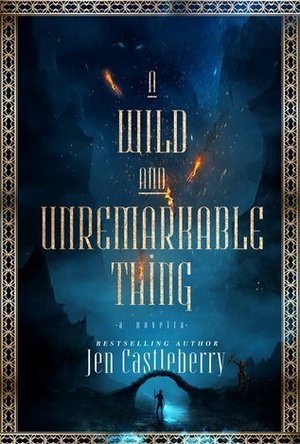Matthew Krueger (10051 KP) rated MediEvil in Video Games
Oct 29, 2019 (Updated Oct 29, 2019)
The game is set in the medieval Kingdom of Gallowmere and centres around the charlatan protagonist, Sir Daniel Fortesque, as he makes an attempt to stop antagonist Zarok's invasion of the kingdom whilst simultaneously redeeming himself.
Development began in 1995 at Millenium Interactive in Cambridge under the working title of Dead Man Dan. The visuals are heavily influenced by Tim Burton's The Nightmare Before Christmas. Originally conceived as an arcade-style shooter for platforms such as Windows and the Sega Saturn, Sony's purchase of SCE Cambridge Studio evolved the game into a PlayStation title.
The game takes place across a variety of levels, many of which require certain objectives to be performed to progress. Sir Daniel Fortesque can use a variety of weapons, consisting of close range weapons such as swords and clubs to long range weapons such as crossbows. When not possessing any items, Dan is able to rip his arm off and use it for both melee and ranged attacks. Dan can equip a shield alongside weapons for defence, but shields have a limited amount of strength and are therefore best used sparingly. Throughout the game, Dan can visit gargoyle heads of two varieties: green ones offer Dan information while blue ones allow Dan to buy services or ammunition by using the treasures he finds.
Lets talk about the plot: In the year 1286, an evil sorcerer named Zarok plotted to take over the kingdom of Gallowmere with his undead army. It is told in legend that the champion, Sir Daniel Fortesque, led the King of Gallowmere's army to victory and managed to kill Zarok before he succumbed to his mortal wounds. In reality, however, Dan was struck down by the first arrow fired in the battle, with the king choosing to cover it up and declare Dan the "Hero of Gallowmere.
It is a classic ps1 underrated game, that people should play, if you havent. Their have recently released it on the ps4. And on that remake you can play the original 1998 game can be unlocked in the remake by completing special objectives. Which is cool.
Lastly shout of to @Kevin Phillipson for getting the hints/clues for this review right.
A must play game.

Pinball Arcade Plus
Games
App
Winner of the Best Mobile Game of 2012 on G4TV! Pinball Arcade by FarSight Studios features exact...

The Empress Dowager Cixi: The Concubine Who Launched Modern China
Book
Empress Dowager Cixi (1835-1908) is the most important woman in Chinese history. She ruled China for...

Yoga Mudras
Health & Fitness and Lifestyle
App
Yoga Mudras - Hand Gestures for Energy Flow, Wellness and enhanced Perception. BACKGROUND Mudras...

Ducati Challenge
Games and Lifestyle
App
Speed and fun on two wheels, in the palm of your hand. Play Ducati Challenge up to 720p: DUCATI...

Magyar rádiók - Legjobb zene / Hír Állomások
Music and Entertainment
App
///***A legjobb rádiós alkalmazás***/// *Teljes lejátszás háttérben *Keresés állomás ...

King of Avalon: Dragon Warfare
Games and Social Networking
App
Make friends and battle enemies across the globe, your dragon and throne await! Get your armor on,...

Onitama
Games
App
Immerse yourself in an ancient Japanese setting and discover Onitama, an exciting, fast-paced...
Boardgames BoardGameApps GreatGames
Ross (3284 KP) rated Game Of Thrones - Season 8 in TV
May 29, 2019 (Updated May 30, 2019)
There were two episodes of pretty much non-stop action. These were visually stunning, however so badly written and incongruous. Given how well the series as a whole has tried to mimic medieval European history, to have a battle start and end in a very short time was simply nonsense. No attention to likely battle plans was attempted (a sieging army wouldn't attack, and a besieged army wouldn't come out onto the field of battle), it was just a CGI-heavy, smoky, frantic fight.
The rest of the series was a much slower pace, which is GoT's style. However those episodes were so flat and dull as to be like someone else entirely had written them. Gone was the political wrangling, the back-stabbing and the two-facedness (generally, there were some brief moments of this).
The focus of each episode was also almost solely in one place, where it has always been at its best by showing so many things at a time. Rather than this being the convergence of all story threads, this just came across as storytelling-by-numbers.
I had no problems with Daenerys' change in character - it had been so well hinted at that you didn't have to be the 3-eyed raven to see it coming. It also felt totally in line with her past decisions, and family history, and this was one of the few parts I felt were well written and understandable.
A lot of fan-favourite characters got shat on in the final few series, but I don't see why people are surprised - the main character of the first series was beheaded in that same series, so this was quite normal for GoT.
I really did not like the final outcome of the series, with Bran on the throne and the whole scene with all the lords (some of whom I still don't recognise) was painful - why would they listen to Tyrion and go with his "can't defeat a story" nonsense.
Overall, it was not a finale worthy of the series as a whole, but it was a reasonably enjoyable and at times thrilling conclusion to an epic story.
And one good thing to come out of this is the motivation it will give other writers: get on with finishing your stories or Benioff and Weiss will do it for you!
Kyera (8 KP) rated A Wild and Unremarkable Thing in Books
Feb 1, 2018
The book is written through alternating points of view, which was a nice way to delve deeper into the character's psyche despite the short text. The main character is Cody, a girl who was born Cayda but has been forced by her father to train and lie her entire life with the hopes that she will slay a Fire Scale. She accepts the pain and commitment because the most important thing is to be able to provide for her family, especially her sisters. I wish that we had been able to get to know the sisters more so that we could form that bond with them and the book would have had more emotional weight.
The other two main characters were Penn and Wolfe. Penn was certainly the most interesting aspect of the story and I enjoyed seeing things from his perspective. Wolfe, on the other hand, was not a character that I related to or enjoyed reading. It was nice however to see things from his perspective as it offered a completely different life experience to view the hunt through.
The book also fell prey to the trope of insta-love, which I believe was also the fault of the story being so short. There was not adequate time to explore the relationship or infatuation between two characters before it seemed as if they were suddenly in love. It almost felt as if chapters of the story were missing because the development of bonds between characters or the plot would jump forward without sufficient explanation. The ending of the book felt incredibly rushed and I wish that it had been given the longer, more detailed conclusion that it deserved.
As a casual reader, I found that I enjoyed the overall story and the weaving of Greek mythology into the plot. Unfortunately, critically there were a number of different aspects that detracted from my enjoyment of the book or drew me out of the story. Despite that, I felt that the author's writing was well done and hope that she can bring more detail to her books in the future.



Kevin Phillipson (10072 KP) Oct 29, 2019
Matthew Krueger (10051 KP) Oct 29, 2019